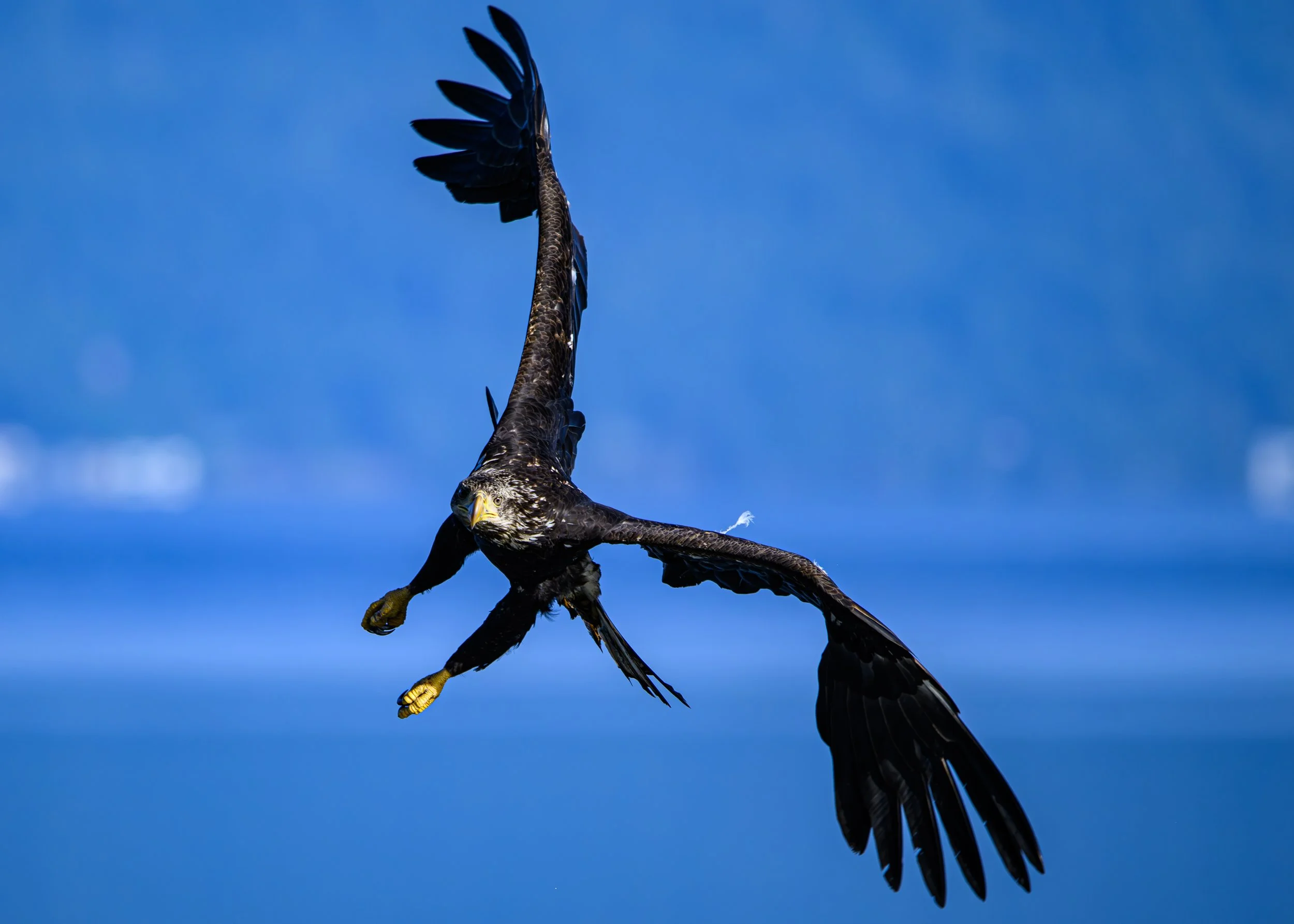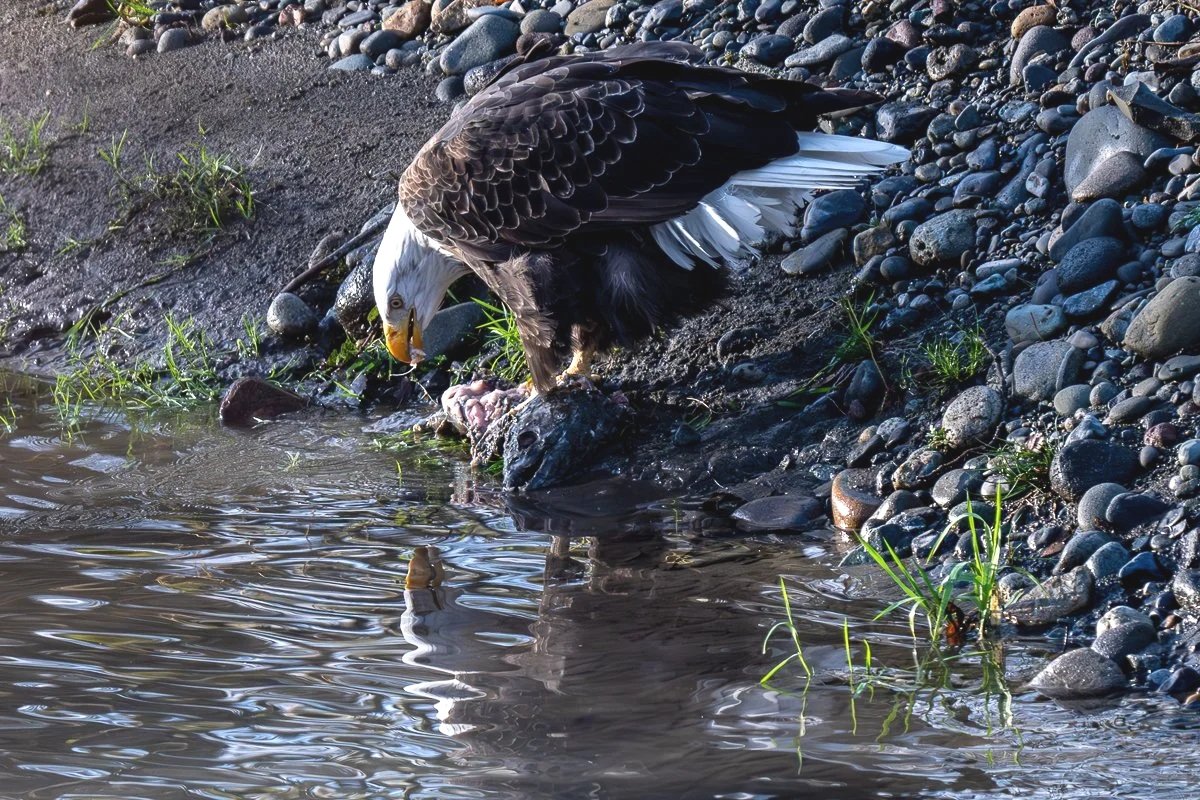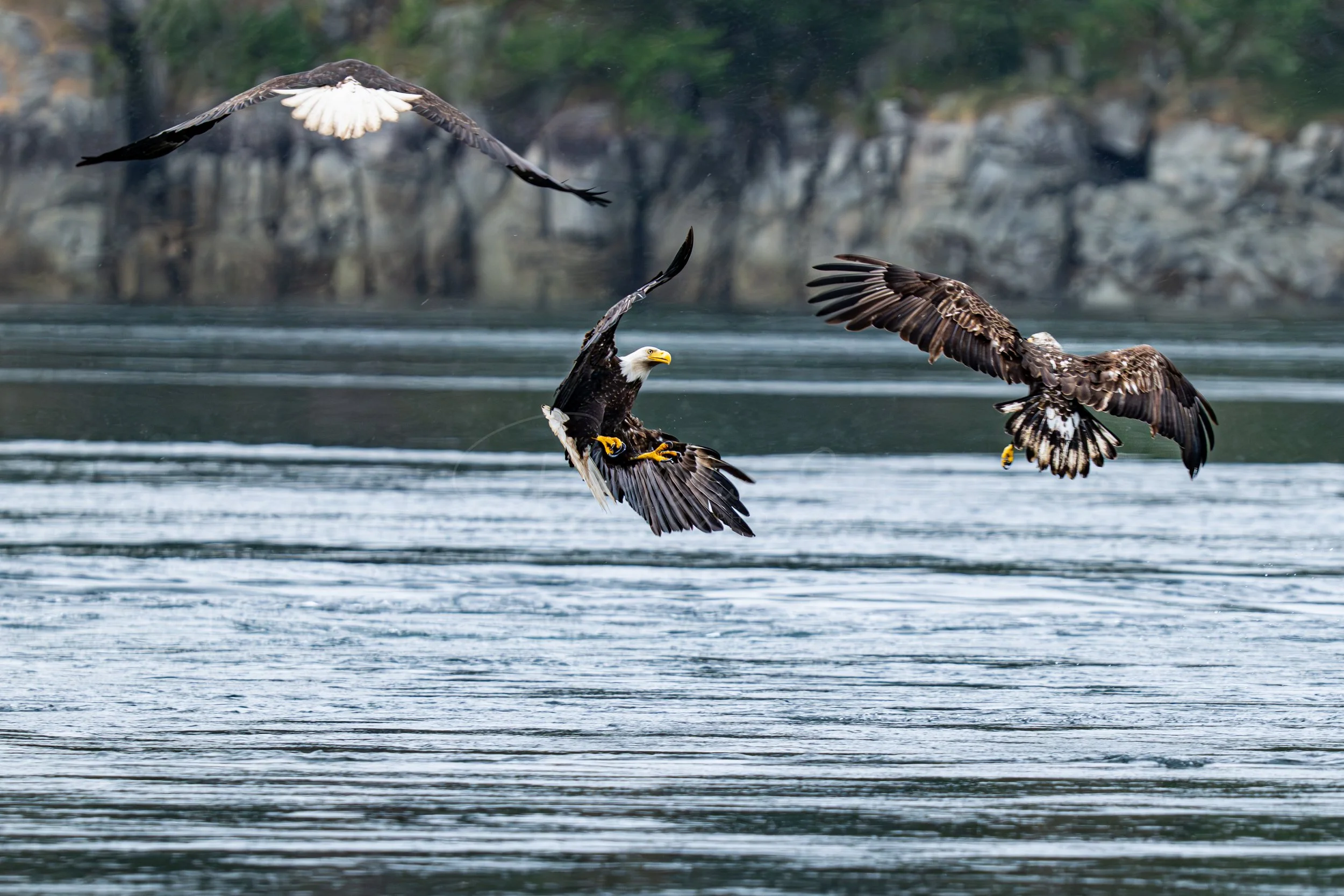
Bald Eagles
Our country’s symbol, they are the highest flying creatures on the planet, they dive and swim, and they mate for life.
They are the greatest conservation success in North America.
Only in North America
The bald eagle is found only in North America, a bird so iconic that it became the national symbol of the United States in 1782 - as our founding fathers wanted to show no other nation can fly as high. For many, it represents freedom and strength. For me, it represents coexistence, how fragile yet powerful that connection can be. It is living proof to us, that if we want to, change and adoption are always there.
It’s almost like they now their boundaries. It is very unlikely to see Bald Eagles even within miles past the US Southern border into Mexico. They do show up sometimes, and they are celebrated.
It’s hard to imagine that not long ago, we almost lost these birds. Anyone born after the 60s would likely not have known about them.
By the 1960s, habitat loss, hunting, and pesticide use had pushed bald eagles to the edge of extinction. DDT weakened their eggshells, making it nearly impossible for chicks to hatch.
The sight of an eagle in the wild became a rare gift.
Then came one of the most successful conservation recoveries in modern history. With protection under the Endangered Species Act, cleaner waterways, and the banning of DDT, bald eagle populations began to rise again.
I have thankfully been lucky enough to see them soar over numerous U.S. states, from the wetlands of Florida to the rugged coastlines of Newfoundland to the beaches of New Jersey, the flatlands in Texas, and here, the evergreen Pacific Northwest.
Bald eagles rely on healthy rivers and strong salmon runs. They depend on forests with tall, sturdy trees for nesting. Everything they need is part of a larger system, a system that depends on us too.
Here, the bald eagle is eating scraps from a meat processing center because they could not find a reliable source and amount of salmon in the river.
Although we saved them once and their numbers are stronger than before, we are also losing high numbers of eagles to lead poisoning caused by ingesting lead fragments from ammunition in game that was left behind, pesticide/rodenticide use when they eat poisoned prey, and habitat loss due to human activity as they struggle to find prey or a feasible nest site.
They are also susceptible to diseases such as bird-flu strains as they prey on smaller avians who might be infected.
Protecting clean water and wild habitat isn’t charity for wildlife, it’s an investment in our shared future.
Each winter, as the salmon return, so do the eagles.
They gather by the hundreds along the rivers, feeding, calling, resting. It feels almost ceremonial, a reminder that the land and all who live on it are connected through cycles that continue, as long as we let them.
Sometimes, as seen here, when they can’t find salmon or other fish in the rivers, they will go searching for leftovers on land, especially in farmlands.
Here, in the Skagit Valley, a processing center for hunters became a congregation point when there were no fish in the Skagit River. They feasted on leftovers from mostly deer and duck, with occasional elk.
I often see them here near the Skagit River and along the Salish Sea. Usually, they are perched high in leafless winter trees, scanning the water for salmon.
If I’m standing close enough, when one takes off into flight, I can hear the air moving through its wings. Watching their ability to perform graceful acrobatics while soaring and going after prey always makes me hold my breath.
Will they hit the ground? Or miss the prey? All these years of observing them, I haven’t seen them hit the ground, but I have seen them miss the prey multiple times. Only to duck (no pun intended) down to the ground and grab it, uncontested the second time. Perhaps just battling with juveniles.
Juveniles, dark and mottled, practice their first dives nearby. They change their colors over five years. The first year they are very dark, the tone on their heads get lighter, and their bodies darker through the years. 3 and 4 year old juveniles can have stunning coloring on their heads.
They lack the white head and tail of the adults, but their focus is the same. Watching them reminds me that strength isn’t about dominance. It’s about persistence, patience, and harmony with the world that sustains you.
Their story is one of recovery and resilience, as well as a mirror and a trophy to what we are capable of achieving. When we work together and resolve to save a species, we get to experience these unmatched encounters.
The bald eagle’s survival shows what can happen when people choose to care, act and restore. To coexist.









We are all connected in this beautiful blue marble of ours.












